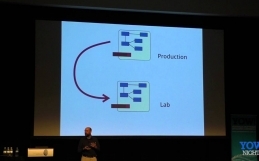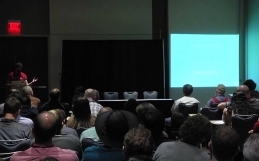The first React.js Conference was held last week at Facebook HQ for the JavaScript library by Facebook and Instagram which has become hugely popular over the last eighteen months.
Facebook created React in order to promote the use of UI components which present data that changes over time for complex UI rendering and open sourced it back in May 2013 after which it did not take long to be pushed into production outside of Facebook complementing other js ecosystems.
By late August React was gathering momentum with nearly 80 Github projects using it and the following month Facebook held a React.js Hackathon at the Seattle office comprising 15 teams which was won by Alex Swann for his multi player quiz game, QuizTime.
By November, React reported in their blog that without any major changes, React had been deployed for a Chrome extension, a Windows 8 application and both mobile and desktop sites supporting IE8 whilst also being used within CoffeeScript and ClojureScript.
Paul O’Shannessy is one of the engineers buried wrists deep in React and explains that the plan with getting to 1.0 was to ‘converge on an API that is aligned with our goals’ which meant keeping the API as simple as possible to help developers succeed with using it and half way through 2014 there were more non Facebook developers committing to Github than there were Facebook engineers.
Fast forward to January 2015 and React.js has built a full ecosystem of contributors around the world and in July this year will be holding another conference across the pond in Paris. Considering the organisers for this event had 600 notification requests for a conference that held 200, the future looks very bright for React.
Go to Facebook Developers YouTube channel for the Conference presentation uploads.



